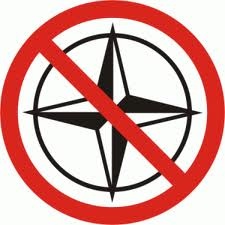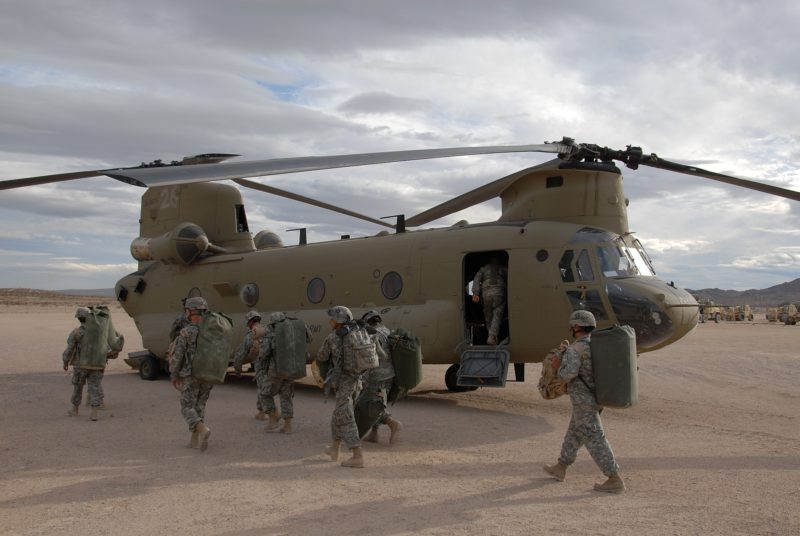
Contrary to popular belief, the use of drones and Unmanned Arial Vehicles (UAVs) dates back to the beginning of the 20th century. Not long after the invention of the airplane, emerging ‘Big Players’ such as William E. Boeing and Glen N. Martin (founder of Lockheed Martin) began to build radio controlled aircraft, essentially the first drones. The military soon gained interest in the aerospace industry which included the new UAV models, thus a link was created between the private and public sector. This link was further strengthened by the Army Air Corps Act of 1926 that created a set of rules for contracts between the private sector and the defense industry. In 1938, President Roosevelt declared a state of emergency and gave the Navy power to seize contracts without competitive bidding in an attempt to build up a formidable military force in preparation for American involvement in the Second World War. This created a strong relationship with emerging companies like Boeing, Lockheed Martin, and Northrop. During the Second World War, demand for drones (then mainly used as target practice for anti-air gunners) increased dramatically, and the US became more reliant on its defense industry, which led to the emergence of the military-industrial complex. Throughout the Cold War these ‘Big Players’ continued to grow and began merging in the early 90’s to form Lockheed Martin, Northrop Grumman and General Atomics. These firms also bought smaller private defense companies further expanding their scope of operations. The growth of these companies allowed for greater spending on lobbyists and thus more influence in Washington politics.

Due to WWII and the Cold War, Washington’s policies remained focused on continuous defense spending and innovation in the military in order to amass enhanced military capabilities – even in times of peace. America now has a changing objective as a global peacekeeper, and upholding global peace has become much more efficient using drones instead of traditional military equipment and strategies. Humanitarian missions in the 90’s in Kosovo, Bosnia and Herzegovina, Rwanda and Somalia further proved that traditional military force is becoming obsolete and the clear alternative is the use of drones. The Post-9/11 Global War on Terror also created a window of opportunity for the expansion of the drone industry and another huge increase in demand for drones. The War on Terror is different from conventional warfare in that there is a greater need to track down individuals’ geographic position and implement fast and decisive action for which drones are ideal weapons. These developments have led to a huge growth in the industry with new jobs being created and greater lobbying power of the Big Players. This apparent change in the nature of war and the changing nature of American foreign policy has led to the point where new military technologies are now being created with the unmanned factor as the main focus. The US has essentially created the backbone of a new form of war fought with machines, not soldiers. This new technology and the emerging military robotics industry provides great opportunity for the economy of not only the US, but other nations as well. This has led to a global arms race in drone and robotics military technology.
In their article, William Wan and Peter Finn, state that “More than 50 countries have purchased surveillance drones, and many have started in-country development programs for armed versions.” In recent years, China has shown great interest in expanding its drone technology and following the USA’s example of shifting military technology towards robotics orientated weapons. In the November 2011 Zhuhai air show, the Chinese unveiled their new WJ-600 drone along with a dozen other models. China is perhaps the fastest developer of UAVs with models which have a striking resemblance to US aircraft such as General Atomic’s Predator and Northrop Grumman’s Global Hawk. The Chinese have also been quick to notice a window of profit for selling drone technologies as previously the US has exported this technology to close allies only. Zhang Qiaoliang, a representative of the Chengdu Aircraft Design and Research Institute said “the United States doesn’t export many attack drones, so we’re taking advantage of that hole in the market.” China’s role in exporting drones is increasing drastically as it does not have many trade restrictions, and the country has begun showing more drones in international air shows with intent to sell. Among other models, they now boast the ‘pterodactyl’, a model comparable to the US Predator, with an anticipated market in Pakistan, the Middle East, and Africa.

The increasing Chinese role in exporting drones and drone technology has also pressured the US to broaden its list of drone export approved countries in order to counter Chinese exports and gain an upper hand in the market. The US also has a military strategic interest in maintaining a monopoly in the drone market, because it gives the US and its allies a military advantage over other nations. General Atomics has received approval from the Pentagon to sell unarmed surveillance drones to the Middle East and Latin America. The company is now pending approval to sell to Saudi Arabia, the United Arab Emirates, and Egypt. The US has also simultaneously been controlling where its allies sell their drones. In 2008 Israel sold and anti-radar attack drone to China, for which it had been penalized by a temporary exclusion from the F-35 Joint Strike Fighter programme. All nations are, however, equally privileged to develop and use drones and the US should not have the right to maintain a monopoly over the drone market by coercive means.
Although the drone market is economically and strategically beneficial to many nations, the proliferation of this technology does have some adverse effects. For example, China’s aggressive drone exports have created unrest in its neighbouring countries, which could lead to regional instability if this new Chinese military advantage is not accounted for. In response, Japan has stated it will send military officials to the US in order to study UAV technologies and recently the US has sent two global hawk surveillance drones to Japan in a statement that it is committed to Asian security. The proliferation of the UAV is highly alarming as it signals a greater movement towards the proliferation of robotic weapons, which raises questions about the rules of engagement. Noel Sharkey stated that “one of the great inhibitors of war is the body bag count, but that is undermined by the idea of riskless war”, he further explained that widespread use of attack drones could “reduce the threshold for going to war”. The current use of drones by the US is also very controversial as many targeted killing in Pakistan are de facto a violation of Pakistan’s sovereignty. Targeted killing is also disputed by many academics of international law, and the drone movement in itself lacks clear international legal governing structures, which could lead to the misuse of drones by more nations outside the US. To conclude, the growing drone market – and possibly an emerging military robotics market – have high economic and strategic values for many nations; however, uncontrolled proliferation could prove dangerous. Greater supply and market access to these weapons could lead unwanted parties such as terrorist groups or irrational states like North Korea to acquire these weapons.




